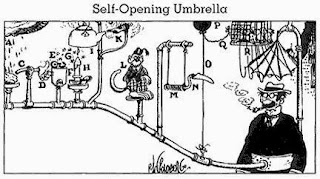This week we entered the world of book arts with pop-up book design. Who doesn't love the delight of opening a great pop-up book?
As Montreal pop-up artist Natalie Draz says "there's no such thing as a new fold in pop-up design. It's basically all about the remix." With this in mind our pop-up session included two classic pop-up folds: the talk box (aka the mouth fold) and the integrated box fold.
Kids and adults alike love the talk box. Because it's easy to make and because it immediately evokes a snapping mouth. It's a great introductory fold because it gently leads our young paper engineers into "thinking with their hands". For pop-up art, the paper must be coaxed into the form.
A talk box might conceal a secret message for the reader.
Howabout this double embedded talk box a student came up with all on his own?
The integrated box fold is often seen in the form of a square platform.
A whole bunch of them together make excellent skeleton ribs.
Here's a nested structure in development.
Love the way the green backing paper adds dimensionality to this page.
With these pages made we started to construct a storybook. Why not use a combination of the folds on one page? Some students want to keep adding pages at home…
This student used an integrated box to support delicate waving sea weed.
Here's a book about a mad scientist, who unfortunately blows himself up!
Some kids added text others preferred more of a comic format, but either way storytelling and design narrative started to merge.













































